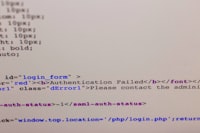Journal article
Uniformity in the preparation of a financial report needs to be done to get the results of a financial report is good and trustworthy. For that every company needs to implement the applicable accounting standardization in order to create information that is easily understood by users of information. In a financial statement of the most important is the recognition of revenues and expenses in accordance with the applicable standardization. The purpose of this study was to determine the recognition of revenues and expenses made by PT. Tri Pakarta insurance in accordance with the standardization that exists is under PSAK No. 28 about insurance. The method used is descriptive analytical method, which is a method of research based on the search data- data will then be analyzed and described later concluded in accordance with the purpose of this study. From these results it can be concluded that PT. Insurance Tri Pakarta has made the recognition of revenues and expenses that have taken the appropriate standardization of existing ie, revenue is recognized based on the contract effective or calculated in accordance with its useful life, and the burden of claims in connection with the events of loss to the insurance objects insured, covers claims approved (settled claims), claims in process (outstanding claims), claims incurred but not yet reported and claim settlement expenses (claims settlement expenses), recognized as an expense claim when there is an obligation to meet claims or losses when the report came up.
















































